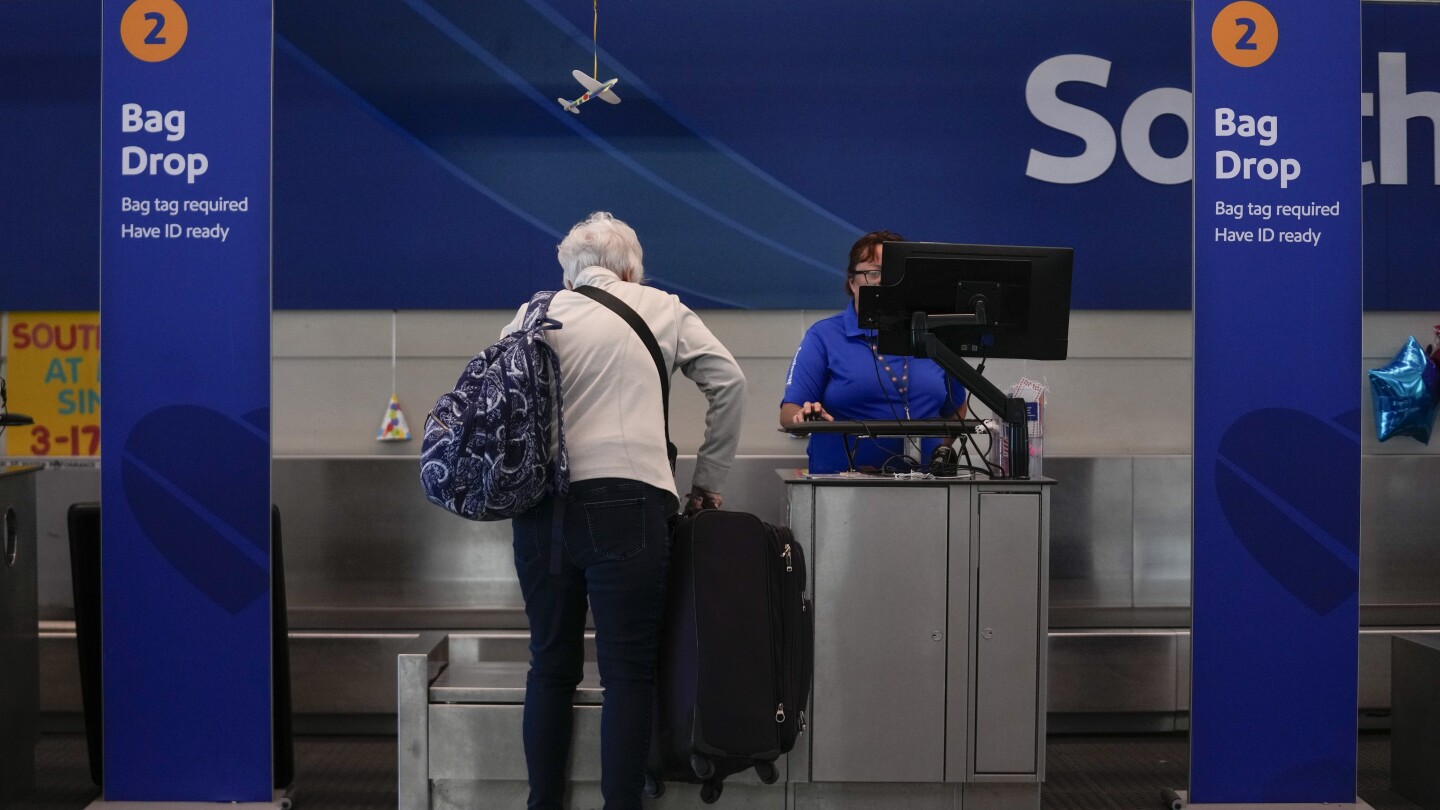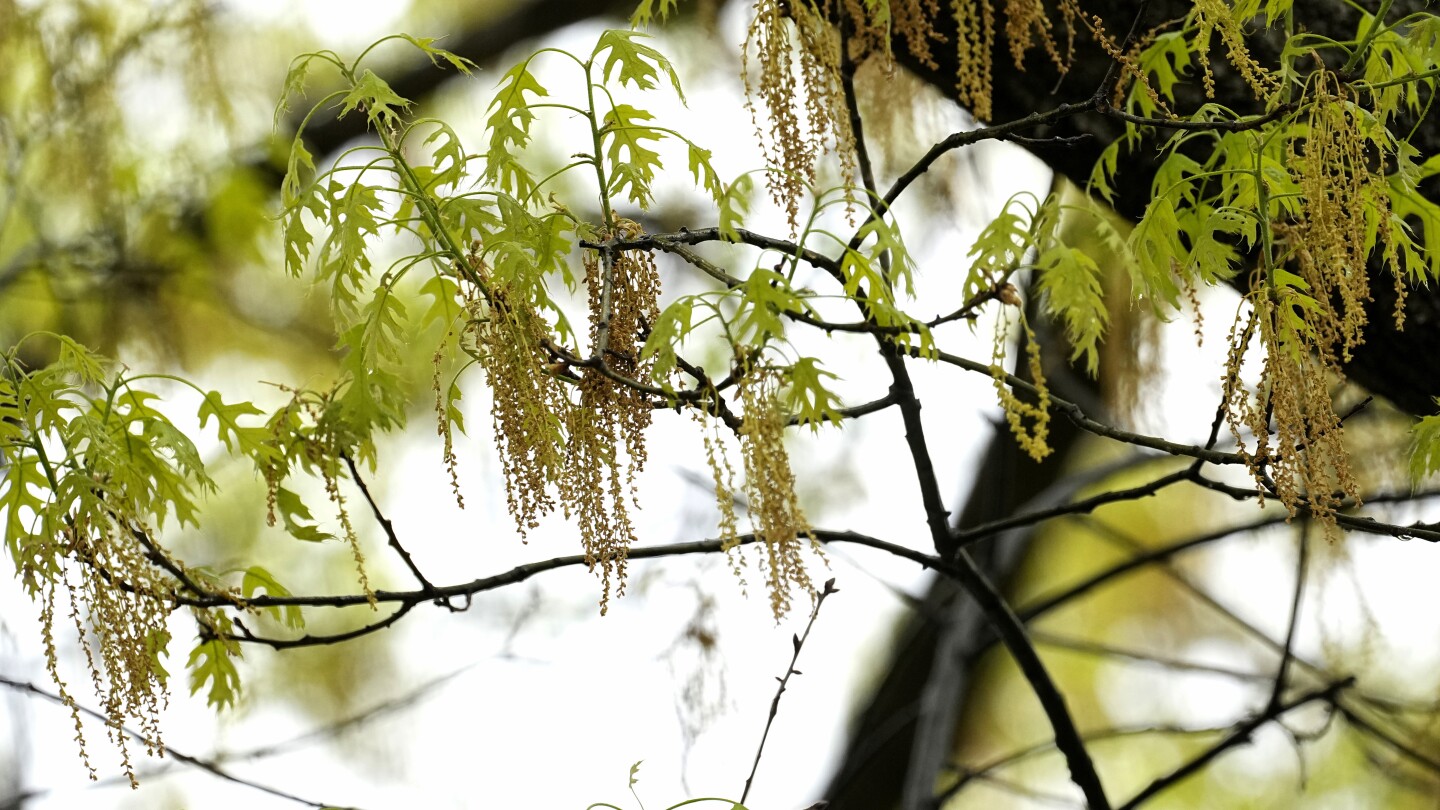Lifestyle
At Southwest Airlines, checked bags will no longer fly for free

Southwest Airlines will begin charging customers a fee to check bags, abandoning a decades-long practice that executives had described last fall as key to differentiating the budget carrier from its rivals.
Southwest, which built years of advertising campaigns around its policy of letting passengers check up to two bags for free, said Tuesday that people who haven’t either reached the upper tiers of its Rapid Rewards loyalty program, bought a business class ticket or hold the airline’s credit card will have to pay for checked bags.
The airline did not outline the fee schedule but said the new policy would start with flights booked on May 28.
“We have tremendous opportunity to meet current and future customer needs, attract new customer segments we don’t compete for today, and return to the levels of profitability that both we and our shareholders expect,” CEO Bob Jordan said in a statement.
Less than a year ago, the Dallas-based airline announced it was doing away with another tradition, the open-boarding system it has used for more than 50 years. Southwest expects to begin operating flights with passengers in assigned seats next year.
Southwest has struggled recently and is under pressure from activist investors to boost profits and revenue. The airline reached a truce in October with hedge fund Elliott Investment Management to avoid a proxy fight, but Elliott won several seats on the company board.
The airline announced last month that it was eliminating 1,750 jobs, or 15% of its corporate workforce, in the first major layoffs in the company’s 53-year history.
The job cuts, which were scheduled to be mostly completed by the end of June, are part of a plan to slash costs and transform the company into a “leaner, faster, and more agile organization,” Jordan said at the time.
Southwest’s stock rose more than 9% Tuesday.
As recently as Southwest’s investor day in late September, airline executives described the bags-fly-free as the most important feature in setting Southwest apart from rivals. All other leading U.S. airlines charge for checked luggage, and Wall Street has long argued that Southwest was leaving money behind.
The airline estimated in September that charging bag fees would bring in about $1.5 billion a year but cost the airline $1.8 billion in lost business from customers who chose to fly Southwest because of its generous baggage allowance.
Southwest said Tuesday that it would continue to offer two free checked bags to Rapid Rewards A-List preferred members and customers traveling on Business Select fares, and one free checked bag to A-List members and other select customers. Passengers with Rapid Rewards credit cards will receive a credit for one checked bag.
People who don’t qualify for those categories will get charged to check bags. The airline said that it also would roll out a new, basic fare on its lowest priced tickets when the change takes effect.
“I would rather have the free checked bags, that’s for sure,” said customer Dorothy Severson, who was awaiting a flight Tuesday at Chicago Midway International Airport. “It’s one of the main reasons I still fly Southwest.”
Southwest is betting that the added bag fees will outweigh the loss of business from travelers who look closely at the costs on top of ticket prices. Rivals on Tuesday saw an opening.
“I think clearly there are some customers who chose them because of that, and now those customers are up for grabs,” said Delta Airlines President Glen Hauenstein, speaking at the J.P. Morgan Industrials Conference.
Yet in the current economic environment, keeping travel affordable may play an outsized roll in staying competitive. The trade war initiated by President Donald Trump is roiling U.S. markets and dampening the high-flying optimism prevalent last year among businesses and households.
To start the week, Delta slashed its quarterly earnings and revenue expectations, saying that a recent decline in consumer and corporate confidence over the economy is weakening domestic demand. Shares of Delta have tumbled 24% this year.
Shares of United have slumped 22%, JetBlue 27% and American Airlines a whopping 32%.
On Tuesday, Southwest cut its own expectations for the quarter. The airline now anticipates revenue per available seat mile will rise between 2% and 4%. That is down sharply from its previous projections of a 5% to 7% increase. The airline said it expects capacity to be down about 2%.
The airline announced last year that along with giving passengers assigned seats, it would charge them extra for with more legroom and offer red-eye flights.
____
AP Video Journalist Melissa Perez Winder contributed to this report from Chicago.
Lifestyle
Zimbabwe’s stone carvers seek a revival as an Oxford exhibition confronts a British colonial legacy

CHITUNGWIZA, Zimbabwe (AP) — A pair of white hands blinding a Black face. A smiling colonizer with a Bible, crushing the skull of a screaming native with his boot. Chained men in gold mines, and a pregnant woman.
These stone sculptures from Zimbabwe will take center stage at an upcoming exhibition at Oxford University in Britain, aiming to “contextualize” the legacy of British imperialist Cecil John Rhodes with depictions of religious deception, forced labor and sexual abuse.
Rhodes conquered large parts of southern Africa in the late 19th century. He made a fortune in gold and diamond mining and grabbed land from the local population. His grave lies under a slab of stone atop a hill in Zimbabwe.
Oxford’s Oriel College, where the exhibition will be held in September, is a symbolic setting. A statue of Rhodes stands there despite protests against it since 2015. Rhodes, who died in 1902, was an Oriel student who left 100,000 pounds (now valued at about 10.5 million pounds, or $13.5 million) to the school. His influence endures through a scholarship for students from southern African countries.
For Zimbabwean stone carvers at Chitungwiza Arts Center near the capital, Harare, the exhibition is more than an opportunity for Western audiences to glimpse a dark history. It is also a chance to revive an ancient but struggling art form.
Stone sculpture, once a thriving local industry, has suffered due to vast economic challenges and declining tourism.
“This will boost business. Buyers abroad will now see our work and buy directly from the artists,” said sculptor Wallace Mkanka. His piece, depicting the blinded Black face, was selected as the best of 110 entries and will be one of four winning sculptures on display at Oxford.
Zimbabwe, meaning “House of Stone,” derives its identity from the Great Zimbabwe ruins, a 1,800-acre Iron Age city built with precision-cut stones delicately stacked without mortar. It is a UNESCO World heritage site.
The southern African country has long used stone sculpture as a form of storytelling to immortalize history. The craft survived close to a century of colonial rule that sought to erase local traditions, religion and art forms.
It thrived internationally instead. Thousands of pieces were plundered from Africa. Some later became subjects of repatriation campaigns. Others became prized by tourists and collectors. A permanent collection of 20 Zimbabwean stone sculptures is displayed in a pedestrian tunnel at Hartsfield-Jackson Atlanta International Airport, one of the world’s busiest.
At its peak following independence, Zimbabwe’s stone sculpture industry thrived, with local white farmers purchasing pieces for their homes and facilitating international sales.
“Customers were everywhere. They would pay up front, and I always had a queue of clients,” recalled Tafadzwa Tandi, a 45-year-old sculptor whose work will feature in the Oxford exhibition.
However, the industry has struggled over the past two decades.
Zimbabwe’s global image suffered after controversial land reforms more than two decades ago displaced over 4,000 white farmers to redistribute land to about 300,000 Black families, according to government figures. Late ruler Robert Mugabe defended the reforms as necessary to address colonial-era inequities, but they had unintended economic consequences.
“Many of our customers were friends of the farmers. That is where the problem originated from,” said Tendai Gwaravaza, chairman of Chitungwiza Arts Center.
At the center, the sound of grinders filled the air as sculptors carved. Hundreds of finished pieces, ranging from small carvings to life-sized sculptures, waited for buyers.
“The only solution now is to get out there to the markets ourselves. If we don’t, no one will,” Gwaravaza said.
The Oxford exhibition represents such an opportunity for exposure, he said.
It is the brainchild of the Oxford Zimbabwe Arts Partnership, formed in response to the “Rhodes Must Fall” campaign during the Black Lives Matter protests in the U.S.
The group, consisting of Zimbabwean artists, an Oxford alumnus and a professor of African history, initially envisioned a larger project titled “Oxford and Rhodes: Past, Present, and Future.” It included enclosing Rhodes’ statue in glass, installing 100 life-size bronze statues of African liberation fighters and creating a collaborative sculpture using recycled materials to represent the future.
However, the project required an estimated 200,000 pounds, far beyond available resources. Eventually, Oriel College provided 10,000 pounds for a scaled-down exhibition.
“It’s still my hope that one day it could happen, but for now we have just accepted something very small to make a start and to do something,” said Richard Pantlin, the Oxford alumnus and OZAP co-founder.
___
For more on Africa and development: https://apnews.com/hub/africa-pulse
___
The Associated Press receives financial support for global health and development coverage in Africa from the Gates Foundation. The AP is solely responsible for all content. Find AP’s standards for working with philanthropies, a list of supporters and funded coverage areas at AP.org.
Lifestyle
Allergy season: How to check pollen levels and alleviate symptoms

ATLANTA (AP) — Allergy season can be miserable for tens of millions of Americans when trees, grass, and other pollens cause runny noses, itchy eyes, coughing and sneezing.
Where you live, what you’re allergic to and your lifestyle can make a big difference when it comes to the severity of your allergies. Experts say climate change is leading to longer and more intense allergy seasons, but also point out that treatments for seasonal allergies have become more effective over the last decade.
Here are some tips from experts to keep allergy symptoms at bay — maybe even enough to allow you to enjoy the outdoors.
Where are pollen levels the worst this year?
The Asthma and Allergy Foundation of America issues an annual ranking of the most challenging cities to live in if you have allergies, based on over-the-counter medicine use, pollen counts and the number of available allergy specialists.
This year, the top five cities are: Wichita, Kansas; New Orleans; Oklahoma City; Tulsa, Oklahoma; and Memphis.
Which pollens cause allergies?
There are three main types of pollen. Earlier in the spring, tree pollen is the main culprit. After that grasses pollinate, followed by weeds in the late summer and early fall.
Some of the most common tree pollens that cause allergies include birch, cedar, cottonwood, maple, elm, oak and walnut, according to the Asthma and Allergy Foundation of America. Grasses that cause symptoms include Bermuda, Johnson, rye and Kentucky bluegrass.
This article is part of AP’s Be Well coverage, focusing on wellness, fitness, diet and mental health. Read more Be Well.
How do I track pollen levels?
Pollen trackers can help you decide when to go outside. The American Academy of Allergy Asthma and Immunology tracks levels through a network of counting stations across the U.S. Counts are available at its website and via email.
Limit your exposure to pollens
The best and first step to controlling allergies is avoiding exposure. Keep the windows in your car and your home closed, even when it’s nice outside.
If you go outside, wearing long sleeves can keep pollen off your skin to help ward off allergic reactions, said Dr. James Baker, an allergist at the University of Michigan. It also provides some sun protection, he added.
When you get home, change your clothes and shower daily to ensure all the pollen is off of you — including your hair. If you can’t wash your hair every day, try covering it when you go outside with a hat or scarf. Don’t get in the bed with your outside clothes on, because the pollen will follow.
It’s also useful to rinse your eyes and nose with saline to remove any pollen, experts said. And the same masks that got us through the pandemic can protect you from allergies — though they won’t help with eye symptoms.
How to relieve allergy symptoms
Over-the-counter nasal sprays are among the most effective treatments for seasonal allergies, experts said.
But the vast majority of patients use them incorrectly, irritating parts of the nose, said Dr. Kathleen Mays, an allergist at Augusta University in Georgia. She suggested angling the nozzle outward toward your ear rather than sticking it straight up your nose.
Over-the-counter allergy pills like Claritin, Allegra and Zyrtec are helpful, but may not be as effective as quickly since they’re taken by mouth, experts said.
Experts also said that if your allergy symptoms are impacting your quality of life, like causing you to lose sleep or a lack focus at work or school, it might be time to consider an allergist appointment for immunotherapies.
Some remedies for allergy relief that have been circulating on social media or suggested by celebrities — like incorporating local honey into your diet to expose yourself to pollen — have been debunked.
Dr. Shayam Joshi, an allergist at Oregon Health and Science University, said that’s because the flowers that bees pollinate typically don’t contain the airborne pollen that causes allergy symptoms.
Is allergy season changing?
With climate change, winters are milder and growing seasons are longer, meaning there’s more opportunity for pollen to stay in the air, resulting in longer and more severe allergy seasons.
In many areas across the country, pollen counts have broken decades of records. In late March, the Atlanta Allergy and Asthma Center measured a pollen count of over 14,000 grains per cubic meter, which is considered extremely high.
___
The Associated Press Health and Science Department receives support from the Howard Hughes Medical Institute’s Science and Educational Media Group and the Robert Wood Johnson Foundation. The AP is solely responsible for all content.
Lifestyle
The 250th anniversary of the Battles of Lexington and Concord opens debate over US independence
NEW YORK (AP) — The American Revolution began 250 years ago, in a blast of gunshot and a trail of colonial spin.
Starting with Saturday’s anniversary of the Battles of Lexington and Concord, the country will look back to its war of independence and ask where its legacy stands today.
The semiquincentennial comes as President Donald Trump, the scholarly community and others divide over whether to have a yearlong party leading up to July 4, 2026, as Trump has called for, or to balance any celebrations with questions about women, the enslaved and Indigenous people and what their stories reveal.
The history of Lexington and Concord in Massachusetts is half-known, the myth deeply rooted.
What exactly happened at Lexington and Concord?
Reenactors may with confidence tell us that hundreds of British troops marched from Boston in the early morning of April 19, 1775, and gathered about 14 miles (22.5 kilometers) northwest on Lexington’s town green.
Firsthand witnesses remembered some British officers yelled, “Thrown down your arms, ye villains, ye rebels!” and that amid the chaos a shot was heard, followed by “scattered fire” from the British. The battle turned so fierce that the area reeked of burning powder. By day’s end, the fighting had continued around 7 miles (11 kilometers) west to Concord and some 250 British and 95 colonists were killed or wounded.
But no one has learned who fired first, or why. And the revolution itself was initially less a revolution than a demand for better terms.
Woody Holton, a professor of early American history at the University of South Carolina, says most scholars agree the rebels of April 1775 weren’t looking to leave the empire, but to repair their relationship with King George III and go back to the days preceding the Stamp Act, the Tea Act and other disputes of the previous decade.
“The colonists only wanted to turn back the clock to 1763,” he said.
Stacy Schiff, a Pulitzer Prize winning historian whose books include biographies of Benjamin Franklin and Samuel Adams, said Lexington and Concord “galvanized opinion precisely as the Massachusetts men hoped it would, though still it would be a long road to a vote for independence, which Adams felt should have been declared on 20 April 1775.”
But at the time, Schiff added, “It did not seem possible that a mother country and her colony had actually come to blows.”
A fight for the ages
The rebels had already believed their cause greater than a disagreement between subjects and rulers. Well before the turning points of 1776, before the Declaration of Independence or Thomas Paine’s boast that “We have it in our power to begin the world over again,” they cast themselves in a drama for the ages.
The so-called Suffolk Resolves of 1774, drafted by civic leaders of Suffolk County, Massachusetts, prayed for a life “unfettered by power, unclogged with shackles,” a fight that would determine the “fate of this new world, and of unborn millions.”
The revolution was an ongoing story of surprise and improvisation. Military historian Rick Atkinson, whose “The Fate of the Day” is the second of a planned trilogy on the war, called Lexington and Concord “a clear win for the home team,” if only because the British hadn’t expected such impassioned resistance from the colony’s militia.
The British, ever underestimating those whom King George regarded as a “deluded and unhappy multitude,” would be knocked back again when the rebels promptly framed and transmitted a narrative blaming the royal forces.
“Once shots were fired in Lexington, Samuel Adams and Joseph Warren did all in their power to collect statements from witnesses and to circulate them quickly; it was essential that the colonies, and the world, understand who had fired first,” Schiff said. “Adams was convinced that the Lexington skirmish would be ‘famed in the history of this country.’ He knocked himself out to make clear who the aggressors had been.”
A country still in progress
Neither side imagined a war lasting eight years, or had confidence in what kind of country would be born out of it. The founders united in their quest for self-government but differed how to actually govern, and whether self-government could even last.
Americans have never stopped debating the balance of powers, the rules of enfranchisement or how widely to apply the exhortation, “All men are created equal.”
“I think it’s important to remember that the language of the founders was aspirational. The idea that it was self-evident all men were created equal was preposterous at a time when hundreds of thousands were enslaved,” said Atkinson, who cites the 20th-century poet Archibald MacLeish’s contention that “democracy is never a thing done.”
“I don’t think the founders had any sense of a country that some day would have 330 million people,” Atkinson said. “Our country is an unfinished project and likely always will be.”
-

 Education2 days ago
Education2 days agoHarvard’s battle with the Trump administration is creating a thorny financial situation
-

 Sports2 days ago
Sports2 days agoAaron Rodgers ‘not holding anybody hostage’ as he decides his future, retirement a possibility
-

 Europe2 days ago
Europe2 days agoLive updates: Trump news, Ukraine peace talks, US immigration, tariffs and university funding
-

 Conflict Zones1 day ago
Conflict Zones1 day agoTrump says US may ‘pass’ on helping end war if Russia, Ukraine resist deal | Russia-Ukraine war News
-

 Conflict Zones1 day ago
Conflict Zones1 day ago‘How do I live like this?’ asks Gaza boy who lost arms in Israeli attack | Gaza News
-

 Europe1 day ago
Europe1 day agoThe Trump administration says Europe is taking advantage of the US. That’s not exactly true
-

 Europe2 days ago
Europe2 days agoTrump’s ‘lone ranger’: How Steve Witkoff became the defacto point man on America’s foreign policy challenges
-

 Lifestyle2 days ago
Lifestyle2 days agoSweets from the sky! A helicopter marshmallow drop thrills kids in suburban Detroit




